What constitutes a B2B market expansion strategy?
A B2B market expansion strategy helps businesses grow by entering new markets, often internationally. Key components include:
- Market Research: Understanding new markets and their unique demands.
- Customer Expansion: Leveraging existing relationships to generate more revenue.
- Market Penetration: Strengthening your presence in existing markets.
- Account-Based Marketing (ABM): Creating personalized campaigns for specific business clients.
- Digital Expansion: Utilizing digital marketing and indirect exporting for low-risk growth.
- Regulatory Adaptation: Adjusting marketing strategies to comply with local laws.
Successful strategies also include high-performance websites, social media engagement, and paid advertising to increase visibility and build long-term relationships.
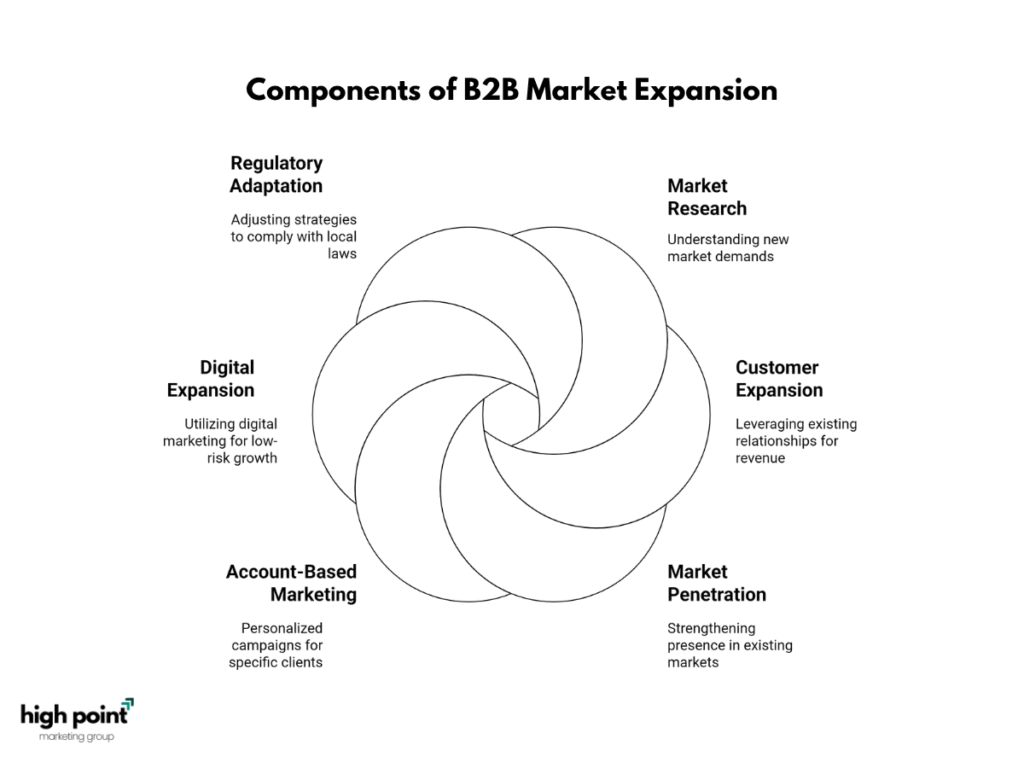
Why is a B2B market expansion framework essential for growth?
A B2B market expansion framework is essential for businesses to enter new markets and drive growth, particularly in international regions. It helps companies adapt strategies, optimize resources, and minimize risks while expanding. According to McKinsey, businesses that expand effectively see a 30% higher revenue. The framework’s main benefit is its ability to enhance market reach and sales performance. Market penetration serves as a complementary concept, focusing on growing within existing markets. B2B companies like Salesforce and HubSpot use these frameworks to scale operations. Originating from Ansoff’s Matrix (1957), it includes types like market research, customer segmentation, and digital expansion.
What are the key stages of a B2B market expansion plan?
Key Stages of a B2B Market Expansion Plan
- Set Clear Goals
Establish SMART goals such as revenue growth and customer satisfaction to guide your expansion. - Market Research
Analyze potential markets, competitors, and customer needs to refine your strategy. - Define Target Audience
Segment the market to tailor your marketing efforts effectively. - Select a Market Strategy
Choose the right entry strategy, whether through direct sales, partnerships, or digital channels. - Adapt Products/Services
Adjust your offerings to meet the specific needs of the new market. - Phased Rollout
Start small with a test market or segment, then expand based on feedback. - Monitor and Refine
Use data and customer feedback to continuously improve your approach.
These stages help ensure a structured and successful B2B market expansion.

How does a B2B market expansion strategy facilitate market entry?
A B2B market expansion strategy is a structured plan that helps businesses enter new markets by identifying the best market segments, entry modes (e.g., joint ventures, acquisitions), and the right timing. It facilitates smooth market integration by reducing risks and leveraging market research. Key components include selecting appropriate entry tactics, such as exporting or licensing, and forming strategic partnerships to ensure successful entry. This strategy is essential for setting the foundation for long-term growth and expanding into new, untapped markets.
How does B2B market expansion address localization challenges?
B2B market expansion addresses localization challenges by adapting products, services, and marketing strategies to fit the specific needs of each region, including language, culture, and regulations. Key solutions include:
- Product and Service Adaptation: Tailoring offerings to meet local requirements.
- Cultural and Language Adjustments: Modifying marketing messages to align with regional preferences.
- Regulatory Compliance: Ensuring compliance with local laws.
By focusing on localization, businesses can build trust, ensure smoother market entry, and drive sustainable growth in new regions.
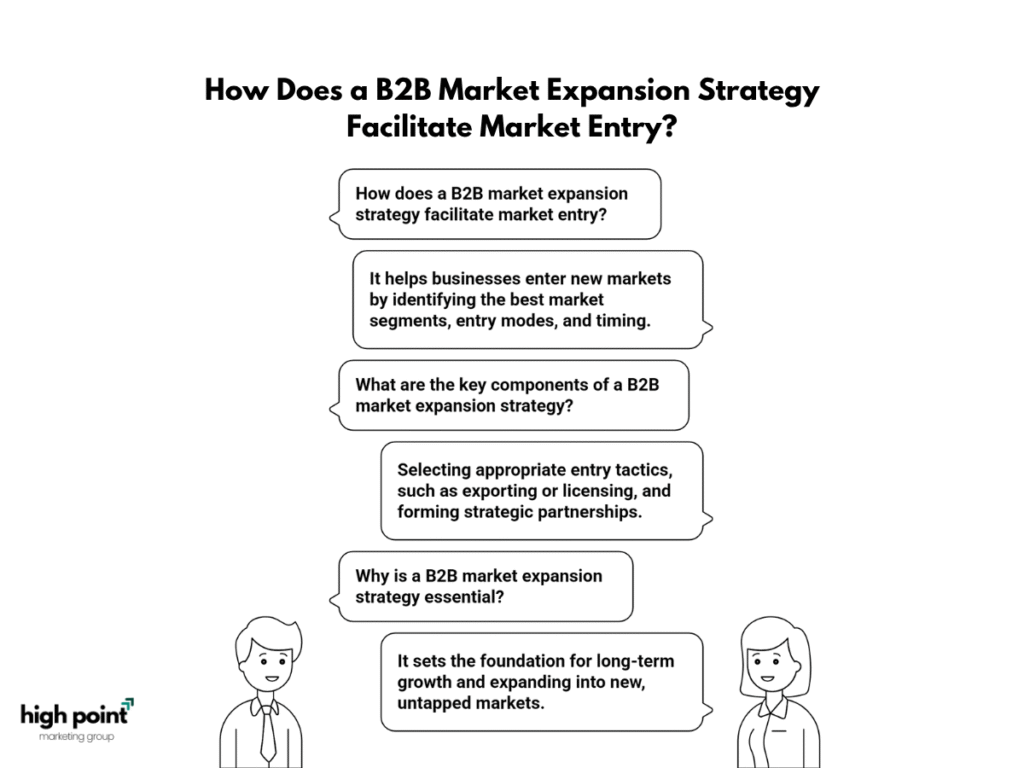
How can B2B market expansion effectively scale operations?
B2B market expansion scales operations by optimizing workflows, leveraging technology, and expanding product offerings. Key strategies include:
- Streamlining Processes: Enhancing efficiency to manage increased demand.
- Automation: Using technology to maintain quality and handle higher volumes.
- Product and Market Expansion: Diversifying products and entering new markets.
- Strategic Planning: Building scalable infrastructure through market research and resource allocation.
These strategies help businesses grow their customer base and sales while ensuring operational efficiency.
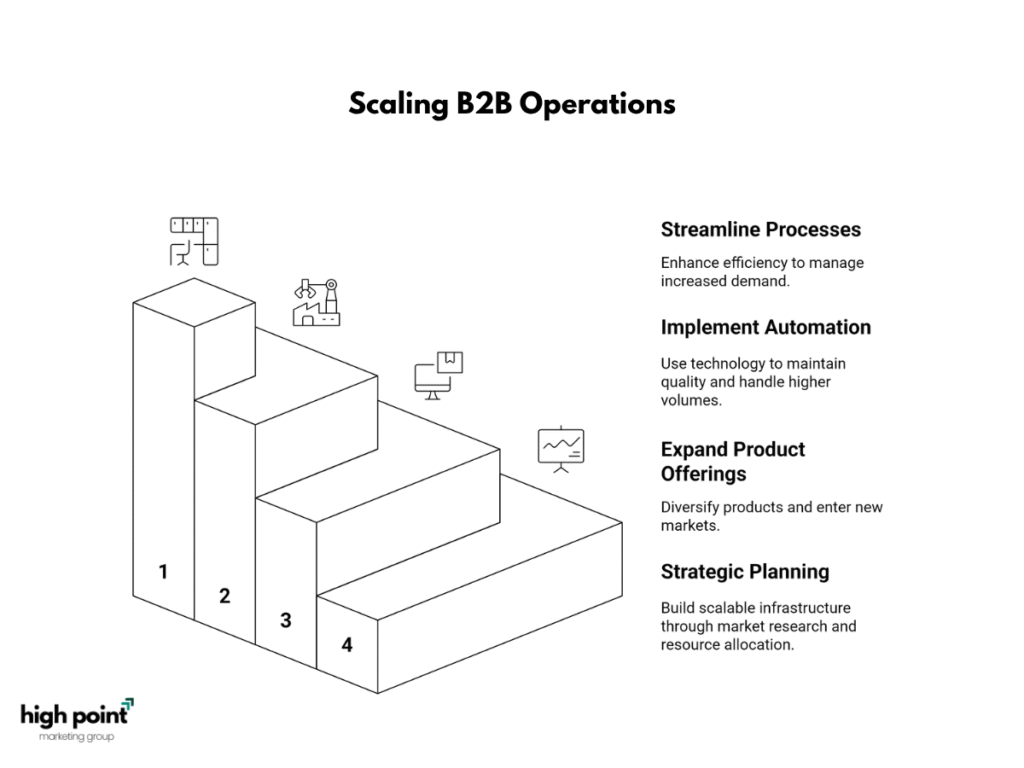
What are the common challenges of B2B market expansion?
B2B market expansion comes with several challenges that businesses need to overcome:
- Long Sales Cycles: B2B sales typically involve relationship-building and multiple decision-makers, leading to longer sales cycles.
- Sales and Marketing Alignment: Effective alignment between sales and marketing teams is crucial for generating leads and managing the customer journey smoothly.
- Limited Resources: Small businesses and startups often face resource constraints, making it difficult to compete and expand in new markets.
- Fragmented Technology: Disconnected marketing tools and platforms can lead to inefficiencies and difficulty in tracking performance and optimizing campaigns.
- Market Differentiation: With intense competition, B2B companies must focus on clear branding and engaging content to stand out.
- Lead Management Issues: Poor lead management and unclear customer journeys can result in missed opportunities.
- Adapting to Digital Marketing: Many B2B businesses struggle with the transition to digital marketing strategies, which are essential for scaling.
- Economic Constraints: Shrinking budgets due to economic uncertainty can limit the ability to invest in growth and market expansion.
To succeed, businesses need to align teams, embrace digital strategies, and focus on building long-term partnerships.
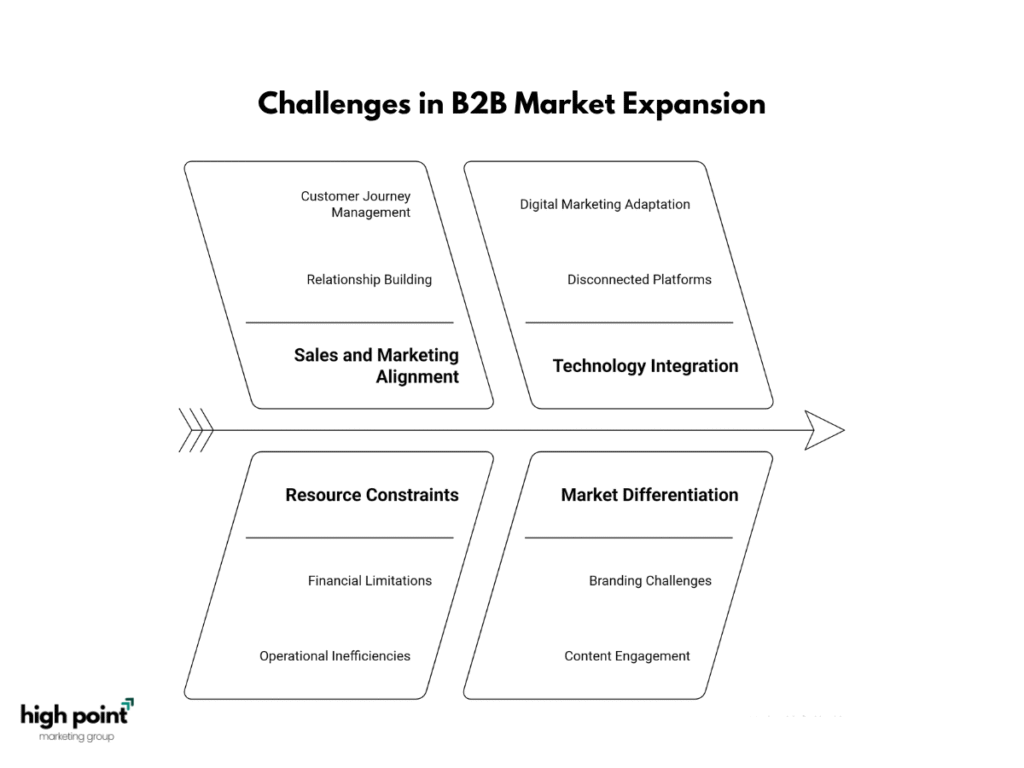
What are the financial risks?
Financial risk refers to the possibility of losing money due to factors like market volatility, credit defaults, and liquidity issues. The common types include:
- Market Risk: Caused by fluctuations in the financial markets.
- Credit Risk: The risk of borrower default.
- Liquidity Risk: The inability to meet short-term obligations.
- Operational Risk: Arises from internal processes or system failures.
To manage these risks, businesses use strategies like diversification, hedging, insurance, and creating contingency reserves. Effective financial risk management ensures companies can meet obligations and avoid significant losses.
What are the operational hurdles?
Operational hurdles are obstacles that disrupt smooth business operations. These challenges can arise from both internal and external factors:
Common Operational Hurdles:
- Internal Factors: Inefficient processes, human errors, technology failures, and inadequate internal controls.
- External Factors: Regulatory changes, supply chain disruptions, and market fluctuations.
Key Challenges:
- Talent shortages and economic pressures can hinder operations.
- Digital transformation and logistical issues like delays or price increases often cause disruptions.
Solutions:
Addressing operational hurdles requires process optimization, automation, and clear team communication. Implementing risk management strategies helps businesses overcome challenges and improve productivity.
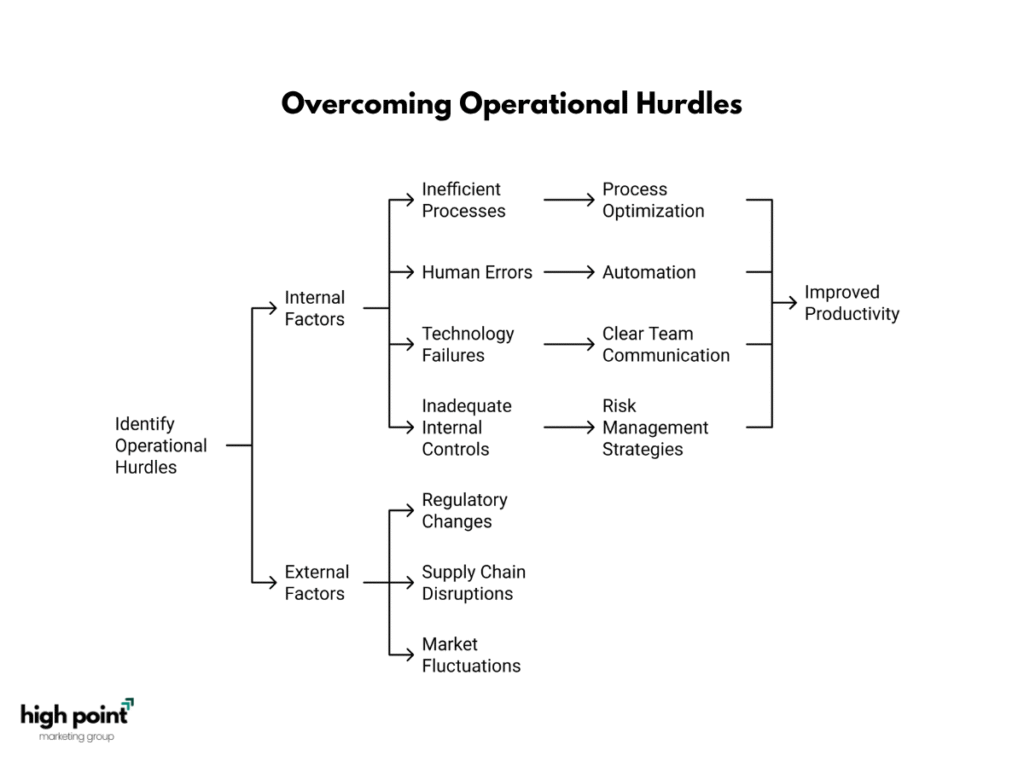
What defines a go-to-market strategy for B2B market expansion?
A B2B go-to-market (GTM) strategy is a plan that outlines how a company will bring a product or service to market, targeting the right audience to drive demand and success.
Key Elements:
- Target Market: Identifying ideal customers and their needs.
- Value Proposition: Creating a compelling reason for customers to choose your product.
- Sales Channels: Selecting the right channels for engagement.
- Positioning & Pricing: Positioning the product and setting the right price.
- Distribution: Ensuring efficient product delivery.
A solid GTM strategy is crucial for expanding into new markets, aligning departments, and ensuring continuous growth.
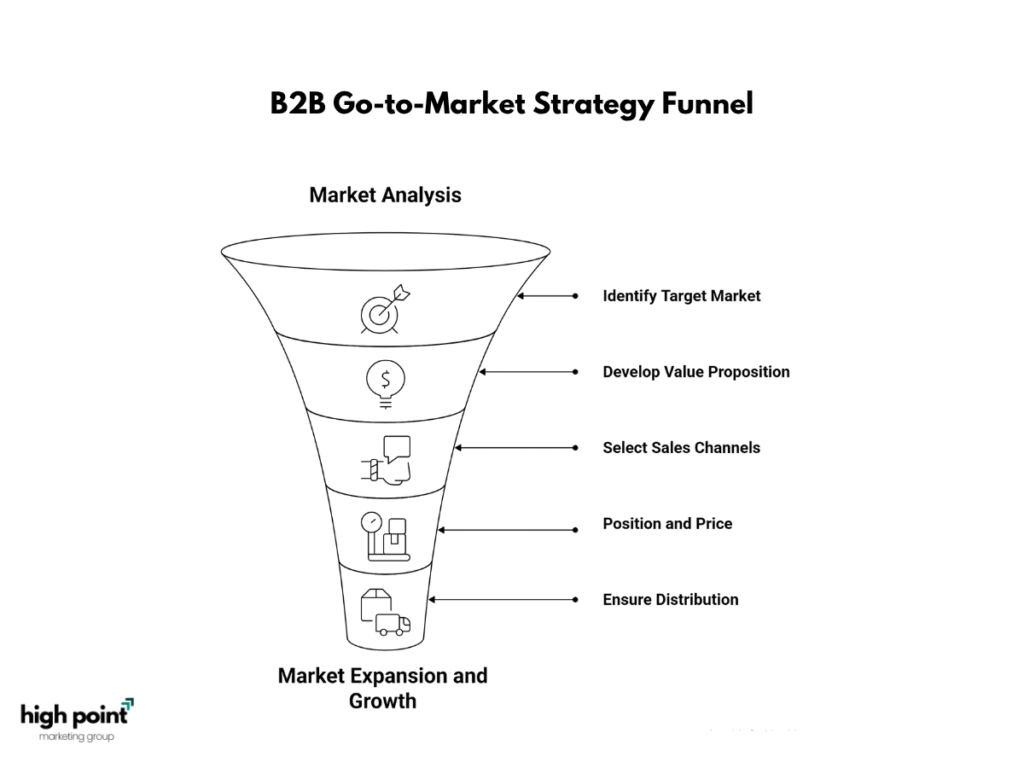
How does market research inform B2B market expansion?
Market research is vital for B2B market expansion as it helps businesses understand customer needs, assess market demand, and identify market gaps.
Key Benefits:
- Customer Insights: Identifies pain points and preferences to guide product development.
- Market Demand Evaluation: Helps forecast opportunities in new markets.
- Competitor Analysis: Provides insights into pricing, positioning, and strategies.
Market research enables businesses to refine their offerings, assess market viability, and make informed decisions for successful expansion. Market Expansion Consulting Services
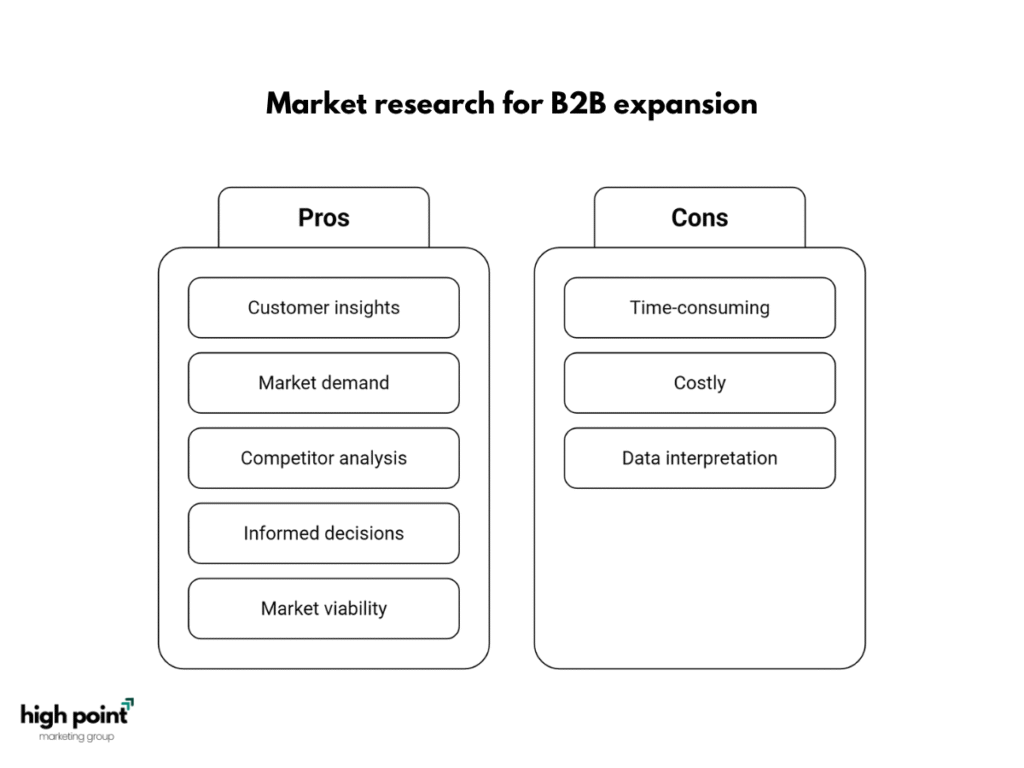
What role does a B2B marketing plan play in market expansion?
A B2B marketing plan is vital for market expansion, providing a strategic roadmap to reach business customers, grow brand presence, and generate revenue. It helps with:
- Market Entry: Identifying target audiences and tailoring marketing messages.
- Alignment: Ensuring marketing goals align with business objectives.
- Continuous Improvement: Refining tactics and driving lead generation.
By leveraging data and insights, a B2B marketing plan ensures businesses stay competitive and effectively expand into new markets.

What do successful examples teach us about B2B market expansion?
Successful B2B market expansion examples teach us the importance of understanding customer needs, segmenting markets effectively, and adapting marketing messages to new markets. They highlight how innovative strategies, data-driven insights, and targeting the right audience drive market penetration and increase brand visibility.
Key Lessons:
- Customer Understanding: Tailor solutions to meet customer pain points in new markets.
- Effective Campaigns: Use innovative strategies and data insights for growth.
- Targeted Messaging: Focus on the right audience for better engagement.
Facts:
- Successful campaigns drive growth by increasing sales and expanding reach.
- Market expansion requires diversifying the client base and using market insights.
Information:
- Use multichannel marketing for a broader reach.
- Adapt to changing market conditions for sustained growth.
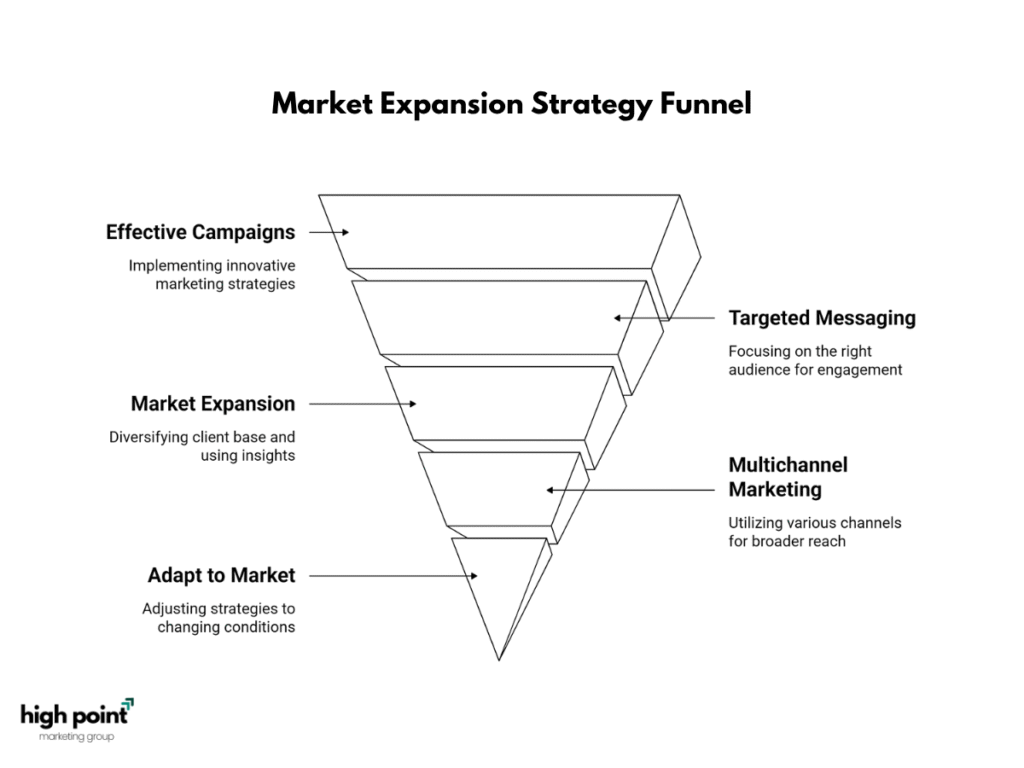
Should you use a partnership model for B2B market expansion?
A partnership model for B2B market expansion can be highly effective. By collaborating with other businesses, companies can access new markets, increase brand visibility, and drive revenue growth. Key benefits include cost efficiency, faster market entry, and shared innovation. Successful partnerships are built on mutual goals, clear communication, and leveraging each other’s networks and resources. Overall, partnerships provide strategic advantages critical for scaling in competitive markets. Market Expansion for Business-to-business Wikipedia
